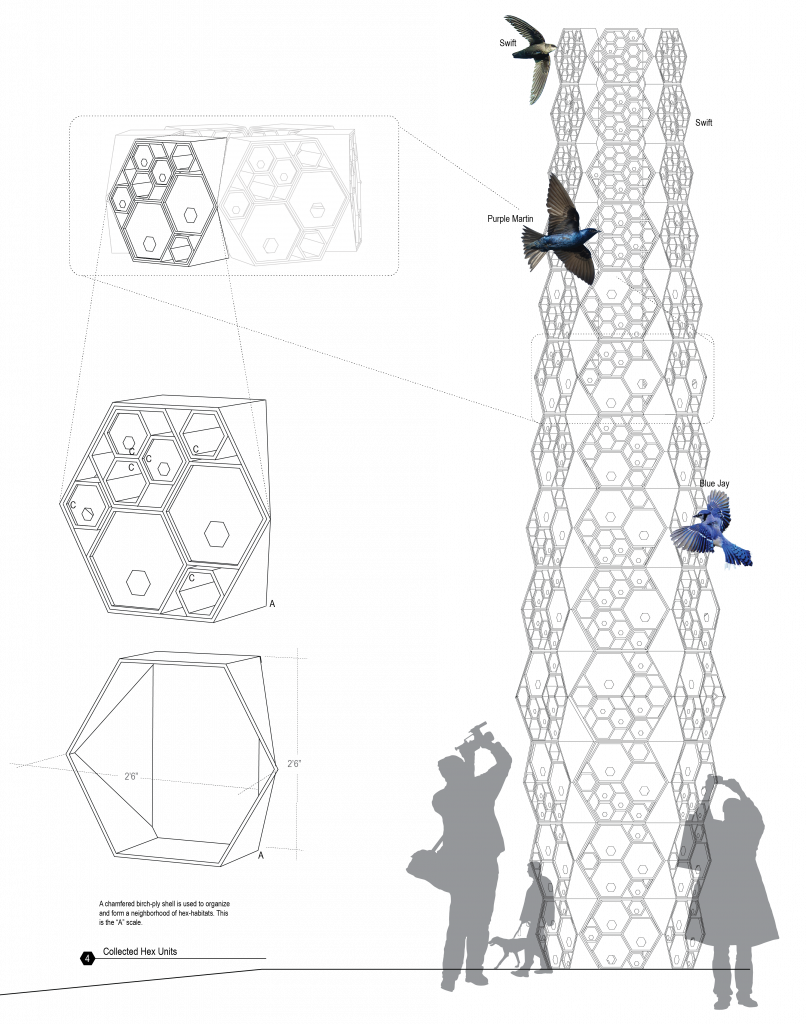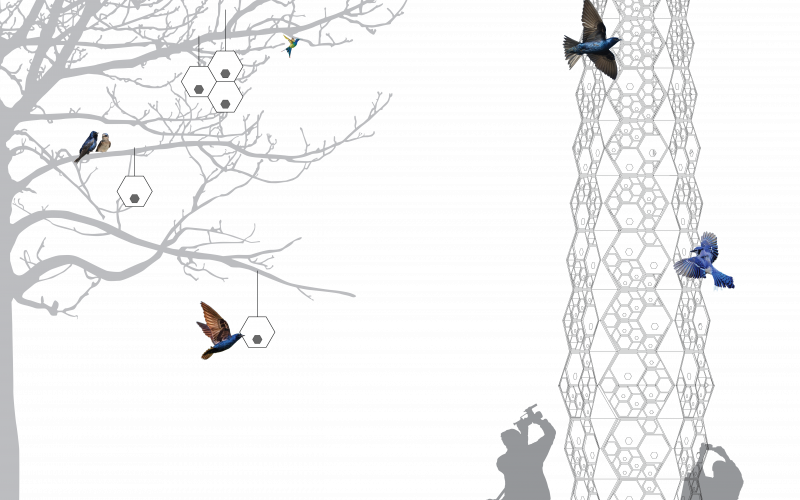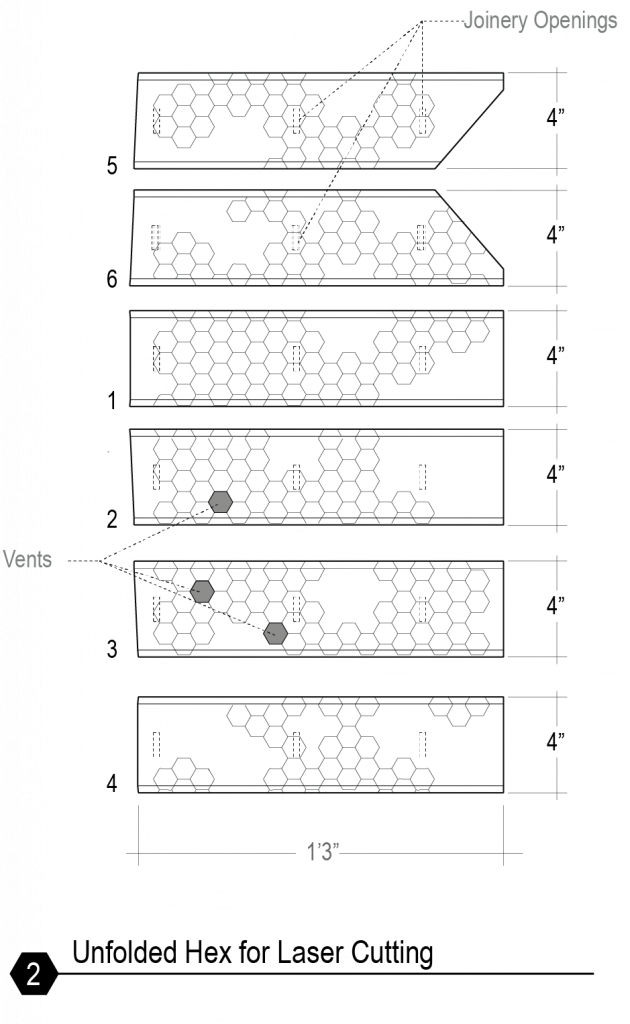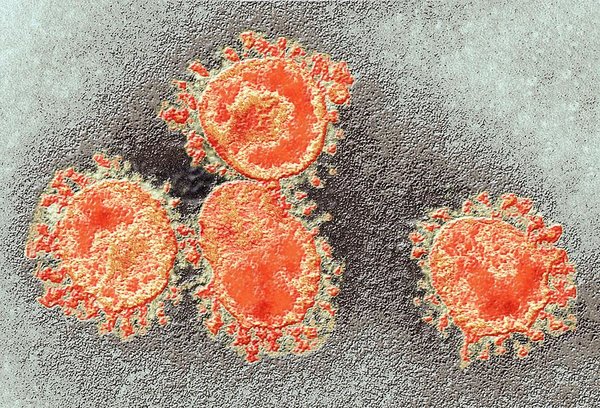Rookery: a colony of breeding animals, generally birds.
A rookery is generally reserved for a colony of gregarious birds, though in this setting we’re expanding ‘rookery’ to include more species, named and unnamed – and I suppose we don’t care too much about whether they’re “gregarious.”

Each individual roost is similarly assembled with 6 laser-cut birch-ply pieces glued to a rib frame. Size can vary to address a range of bird species
A commonly recurring theme throughout “natural” systems is their dense webs of inter-dependency. And likely there’s no better example than an tree. Trees provide food, shelter and material to a wide varieties of plant and animal life. So much so, its difficult to quantify and qualify their value to local ecologies.
We also, here at Expanded Environment, seem to spend an inordinate amount of time ruminating on how to provide tree-like qualities without actually pretending to be a tree. How would one design a system to foster the webs of interdependency found in trees, while being essentially – not a tree? Enter; the Urban Rookery. Our latest foray into design for synanthropic species.
The Urban Rookery is a place of anticipated and unanticipated habitation. The basic premise is modularity. Discrete units of habitation are programmed along with interstitial spaces of “natural” appropriation. The intent is to create a scalar urban ecology. More than simply stacked bird-houses, the idea is to foster the environment that creates the opportunity for that dense web of inter-dependent habitation possible, inviting plants, insects and small mammals to participate in the ecosystem.
There’s also a latent fascination with bio-scaffolding, hybrid structures and armatures for future growth that we’re attempting to explore with the Rookery but perhaps more on that later…
Tree-ness without being a tree.
How does a tree create the varied, multitude of environments that engender a diverse ecology? Why would one want to create a tree, let alone a non-tree. On the topic of simulation, we take at face value that a tree is a high-bar of ecological impact. The epitome of natural development and selection. Also something that would be, or is, very difficult to in fact recreate. However, the value of the tree – its need – in many places where they no longer grow, or where conditions for supporting other life, while perhaps not their own still exists. Could the habitation element or benefits of a tree be recreated somehow to benefit other life? What would it look like?
One element is a simply a range of sheltering spaces. From the smallest of crevices between the bark to hollowed-out tree limbs. The Urban Rookery similarly leverages the simple geometry of platonic shapes to create a range of “nested” locations. The basic building bloc is an extruded hexagon of plywood. Each unit can be left open for opportunistic occupation; capped for more traditional housing types (bird houses etc…) or stacked with other hexagons to create a type of fractal habitation strategy. Hexagons within hexagons etc…
The system can then be repeated at a variety of scales and shapes to create, for example a chimney swift tower, with a central shaft, or simply a wall of stacked units. Unit can be hung from tree branches independently or perhaps mounted to posts or existing structures.

The system of nested shapes can be planned in an anticipated form (chimney swift tower, habitat wall, etc…) or assembled in an ad-hoc manner. And each shape is designed to take advantage of identical fabrication techniques. Each unit is the same, just scaled.
Materials are to be kept simple, easy to procure and sensitive to habitation. A weather treated plywood is or solid core stock is suggested for virtually all of the materials. Fasteners could be glued routed tab connections for the individual units and bolted for unit-to-unit connections. A pattern of hexagons etched into the sides creates a sense of texture and interest at a smaller scale. Gaps created between the hexagons, as they are filled or stacked are left as intended voids for serendipitous cohabitation.
As our cities and suburban areas become more developed with not only fewer trees but fewer dead trees. Sidebar: dead or dying trees are still highly valuable habitat assets. In some ways they become more valuable to certain animals as their bodies begin to decay. However, these are often the most quickly removed trees in a given area as they create potential hazards to neighboring property or other growth.
The Urban Rookery is a simulated tree in a contemporary environment. It will never develop the full richness of an actual, living, or dead tree but may, over time create a variated habitat for a web of life. Synthesis, cohabitation, growth… Like a bone graph or implant in the body, a scaffolding for future growth.










